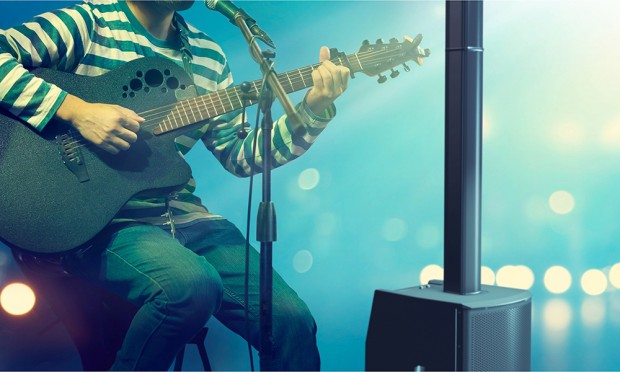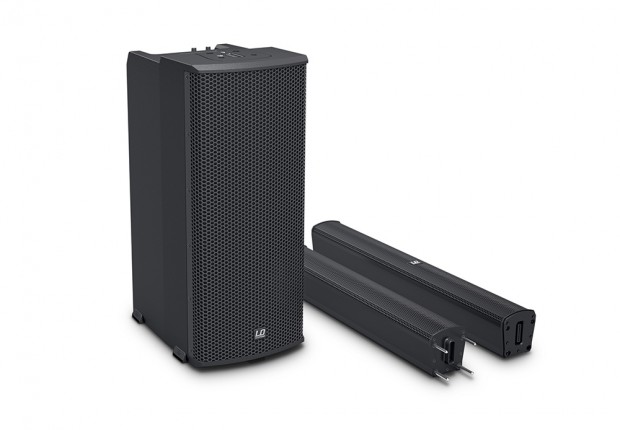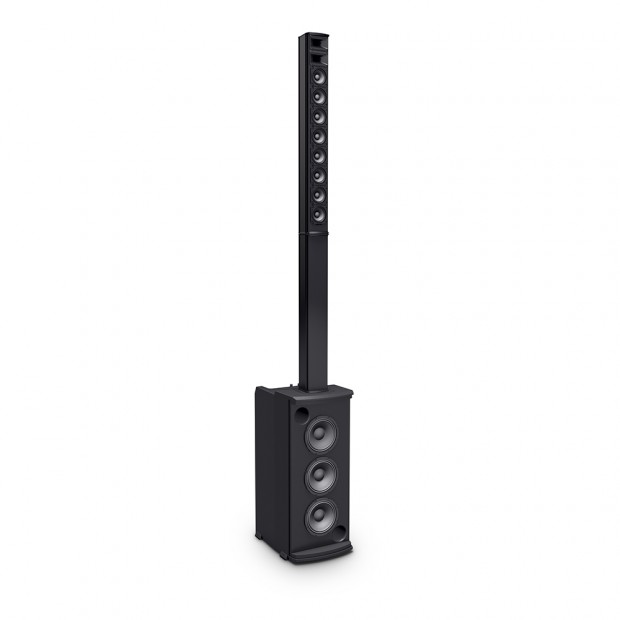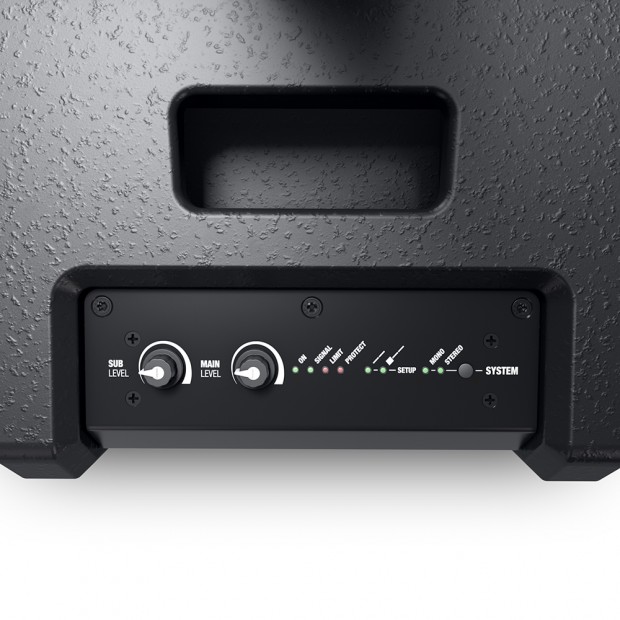Matured? LD Systems MAUI 11 G2 Line array
This is the short version of the introduction to this test: With the MAUI 11 G2, LD Systems sends the second generation of the MAUI 11 into battle in the highly competitive market for compact column systems. Now the extended version: I am not a wine drinker, but sometimes I like to use matured wine as a metaphor. Why? When dealing with wines, it is often said that not every year is equally well suited to being matured over a longer period. Roughly speaking, one could say that the wine must have “it”, to come out unscathed from the long ageing period. It must exhibit the best characteristics. If it doesn’t, then you get an old, albeit not matured wine. A mature wine, it is said, possesses these good characteristics long before the maturation process. With appropriate storage and handling, new properties can be introduced by the manufacturer or in the wine cellar of the customer, thus improving and maturing it even further. This also applies to certain classic hardware and sound technology: Several generations of a device may exist and minor changes from generation to generation put it on a new level of quality and maturity, without losing the characteristics of the original version. We need only think of the different revisions of the 1176 compressor, the Yamaha DX7 FM synthesizer, or the Shure SM57 and 58 or … (the Harley Davidson Evolution engine, ed.). So, to the topic and thus to the beginning of this introduction: With the MAUI 11 G2, LD Systems sends the second generation of the MAUI 11 into battle in the highly competitive market for compact column systems. We will investigate whether mature also means good.

When Adam Hall introduced its own brand LD Systems’ smaller MAUI 11 after the MAUI 28 in 2013, this system was quickly accepted by customers, not least due to its compact form and its considerably lower price when compared with American competitor Bose (sorry Donald, ed.). The customer base comprised solo entertainers, the event industry and DJs (for smaller locations as background music). My wife and I also used the MAUI 11 at numerous church weddings. A short time later, the LD Systems developers upped the ante with the MAUI 11 Mix, which was/is equipped with a 3-channel mixer. Alongside the usual line input of the MAUI 11, an mp3/Hi-Z input and a microphone input were introduced, each equipped with an independent volume control. The MAUI 11 and MAUI 11 Mix featured a speaker complement of 2 x 6.5” woofers for bass, 8 x 3″ drivers for the mid-range and a 1″ high-frequency tweeter. The number 11 featured in the name, because this corresponds with the total number of speakers. The MAUI 11 (Mix) can be split into two sections: column and subwoofer. A plug-in system facilitates a rapid, cable-free assembly.

„Mark 2“
The second generation of the MAUI 11 has incorporated some changes: The column is now made up of two sections that are still connected without the need for cables. The subwoofer now features three instead of two 6.5” speakers.
There are now two 1” neodymium tweeters rather than one. Altogether, there are now 13 loudspeaker components instead of 11, but this has not changed the type designation: MAUI 11 G2. The amplifier section also features some changes: Instead of 340 watts RMS, the second generation now delivers 500 watts RMS, allocated as 300 watts for the sub, 150 watts for the mid-range and 50 watts for the high-frequency range. In the first generation, the power amplifier’s output was distributed as 200/70/70 watts over the three ranges. Of course, the additional speakers must be powered, and a little extra power in the bass range is always welcome.
As usual, an internal DSP ensures that the MAUI 11 G2 is not overloaded and the bandwidth of the audio signal is distributed optimally to the speakers. This is achieved by a multi-band limiter (three bands). Furthermore, the run time is synchronised so that all components emit sound simultaneously, thereby avoiding any phase problems.
The basic data: 24 Bit and 48 kHz at 100 dB signal to noise ratio.
Another new development is the MAUI 11 G2’s stereo mode. Signals from an MP3 player, keyboard or via the RCA inputs can all be connected in stereo. A second MAUI 11 G2 can then be connected to the system output and the stereo mode enabled. Now the connected signals are no longer summed in mono, but split across both sides.
What else has changed? The MAUI 11 G2 provides the option to set up the top separate from the subwoofer, or to mount it on a wall. Suitable fixings and stands are available from the LD Systems range of accessories. The system loads appropriate presets into the DSP, depending on the mounting of the line array source, to ensure optimal sound. The display on the top of the subwoofer indicates the DSP’s current mode of operation (wall/stand-mount or subwoofer-mount). As usual, sub and main level are independently controllable.

The connection panel is on the rear: Mic (XLR/jack combo), Line (2 x combo, 1 x RCA), Hi-Z (jack}, MP3/Bluetooth (3.5 mm jack), System Out (XLR). Attentive readers will count six connection options over four inputs that can be used simultaneously. In the case of the line input, sources connected via the RCA or combo inputs share a level control, so their respective levels must be adjusted on the players.
The same applies when connecting an MP3 player via the 3.5 mm jack input, or a mobile phone via Bluetooth. Even a small acoustic band will manage without a mixer for a living room show, if necessary. Incidentally, Bluetooth version 4.0 is installed, albeit without the “better” sounding AptX Audio Codec.
Anything else? The arrangement of the speakers in the subwoofer is interesting. Whilst the first generation’s two 6.5″ woofers were installed in a V-configuration, (the speaker cones were positioned diagonal to one another), in the second generation they are installed in a line configuration, framed by two bass reflex ports at the top left and bottom right.
Nevertheless, the subwoofer retains its compact dimensions. A low-cut filter has been integrated into the microphone channel to help prevent rumbling. LD Systems specify the dispersion angle of the system as 120° x 20°. A single MAUI can deliver sound to a wide area, and if necessary, also cover parts of the stage, so that in certain circumstances, conventional monitors may be completely omitted, or at least the attendant hassle reduced.

In use
The increased bass response is immediately evident. For some tracks from the player, there is almost too much for me, but that is not a problem because the subwoofer level can be adjusted independently. The high-frequency range sounds a bit more pleasant (sweeter, less harsh) than the first generation. This is particularly noticeable at close range. As I move around the room, I notice how well the sound is dispersed. Speech intelligibility in particular is excellent. Thanks to the Bluetooth connection, a small entertainer set-up can be achieved in seconds. Position the subwoofer, attach the top section, plug in the microphone, push the Bluetooth button and connect the mobile phone, and off you go! Personally, I would prefer the Bluetooth button to be located on the top of the subwoofer. On small stages or in pubs, the MAUI 11 would usually be placed in a corner or in front of a wall, thus making access to it difficult. On the other hand, its location on the back does reduce the chance of nearby listeners thinking that they can be the DJ.

It is already apparent that the Bluetooth connection can drop and must be re-established. If this happens, you have 90 seconds to renew the pairing, as otherwise the module will be disabled. I think it is a shame that nobody thought of incorporating phantom power for a condenser microphone – and why not?
The test with a Shure SM58 and my Sennheiser E945 revealed little room for criticism, bearing in mind the price-performance class. Nor were there any complaints with a Korg PA500 keyboard. In close proximity to the MAUI, the high-frequency response is optimal for both audience and musician. Its predecessor lacked highs at close range and was therefore only of limited use by musicians as a simultaneous monitoring system.

Conclusion
The second generation of the MAUI 11 series from LD Systems proves that you can always do better: A little more bass, higher SPL, sweeter highs and contemporary connection options are significant upgrades to the MAUI 11 G2. It is nice that the price of 699 euros has not increased considerably. The moderate additional cost is absolutely acceptable due to the added value. Grateful users will be schools, youth centres, church communities, DJs entertainers and smaller bands (with a stereo system). In any case, it is a worthy competitor for the usual suspects from Bose and HK Audio.












